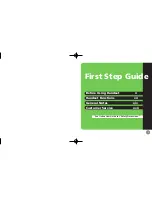
Applications Guide
IP Telephone Quality of Service (QoS) Programming
A-6
Strata CIX Programming Vol.1 12/09
IP Telephone Quality of Service (QoS) Programming
Deploying many IP telephones on a data LAN can have some unexpected pitfalls if the network does not
have the bandwidth and speed required to handle VoIP traffic. To prevent delay, jitter, and data loss for
VoIP traffic and to retain the performance of your other business-critical network applications a network
Voice Readiness Assessment should completed before installing VoIP.
Important!
Voice Readiness Assessments are the responsibility of the installing TSD dealer. Toshiba is
not responsible for supporting problems which occur because the network on which the IP
telephones are installed does not meet VoIP packet requirements.
CIX IP provides a number of adjustable tuning parameters dealing with sharing of network resources,
collectively referred to as Quality of Service (QoS). Some CIX IP voice quality and packet priority
parameters that can be adjusted are described below:
General QoS Adjustments
The CIX provides parameters that can be adjusted to improve IP voice quality. These are normally kept at
default but may be adjusted as necessary to modify IP voice quality. Set each item individually and then
test for voice quality improvements each time a parameter is changed.
1. In Network eManager, select IP-Telephony > IPT Data (Program 250), Field 08 Audio Codec, and
select the codec that should be enabled for individual IP telephones.
The G711 provides the best voice quality but requires the most network bandwidth. Usually G.729A is
used when IP telephones are connected remotely.
2. In Network eManager, select IP-Telephony > System IP Data (Program 150), Field 11 Gain Control of
IPT and BIPU and select the desired setting.
3. You can assign a Voice Packet Table to individual IP telephones in IP Telephony > IPT Data (Program
250–Field 07) Voice Packet Table. In Network eManager, select IP Telephony > Voice Packet
Configuration (Program 152) and configure up to 256 different tables (see below).
Voice Packet Configuration Table (Program 152)
Normally the default table settings are used. If experiencing voice quality problems, set each item
individually and then test for voice quality improvements each time a parameter is changed. The default
settings are shown below. The tables in this program must be assigned to individual IP telephones in
IP-Telephony > IPT Data (Program 250) for them to be used by the CIX.
Important!
•
When setting voice packet configuration tables on a Strata Net IP network the packet table settings
for each node on an end-to-end connection must be the same.
•
Whenever voice packet configuration table changes are made for IP telephones on Strata Net IP
nodes Toshiba recommends pressing the
RESET
button on the BIPU to ensure the changes take
effect.
Voice Packet Configuration Parameters defaults:
•
field 01 - Voice Packet Transmission Interval – 20 msec
•
field 02 - Jitter buffer type – adaptive
•
field 03 - Jitter buffer length – 100 (smooth out packet playback)
•
field 08 - Maximum acceptable delay – 20
•
field 07 - Packet loss threshold – 5
•
field 13 - Packet loss ratio – 5
•
field 10 - Measurement period – 100
Summary of Contents for CIX 200
Page 42: ...Network eManager 2 4 Strata CIX Programming Vol 1 12 09 ...
Page 43: ...Network eManager Strata CIX Programming Vol 1 12 09 2 5 Network eManager ...
Page 44: ...Network eManager 2 6 Strata CIX Programming Vol 1 12 09 ...
Page 314: ...This page is intentionally left blank ...
Page 432: ...This page is intentionally left blank ...
Page 434: ...This page is intentionally left blank ...
















































